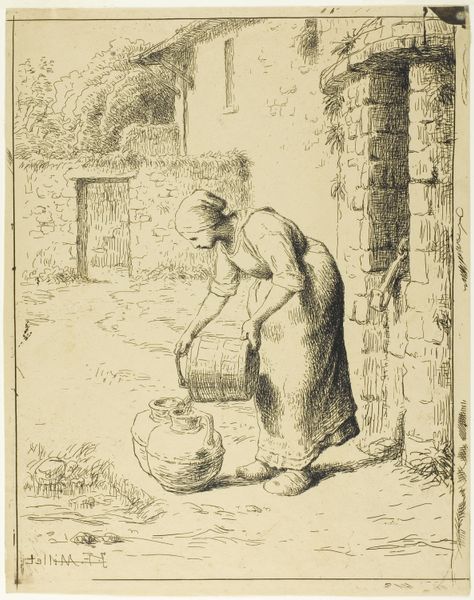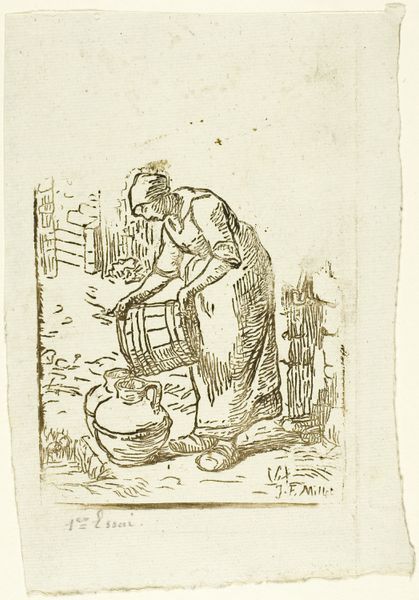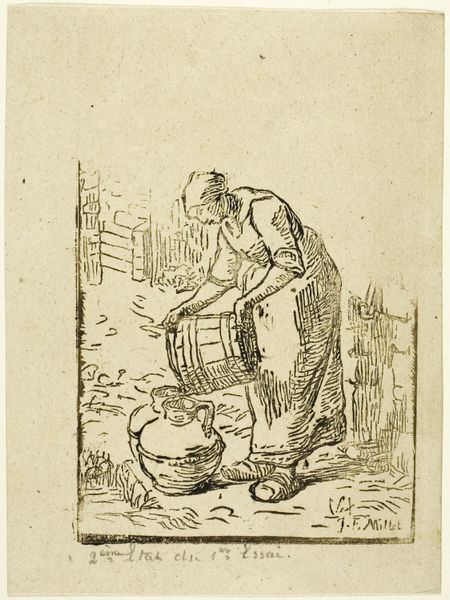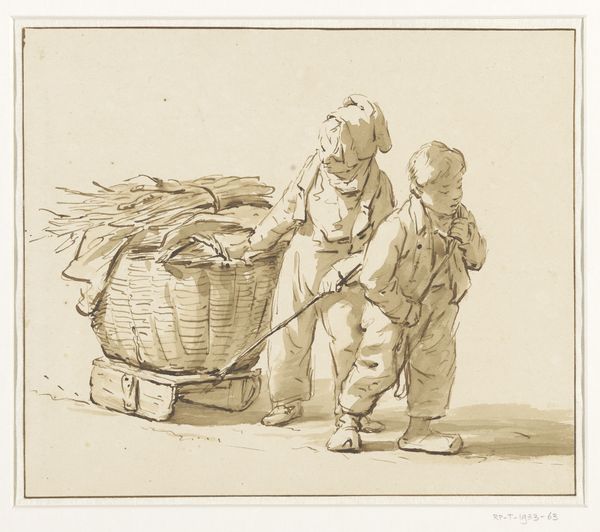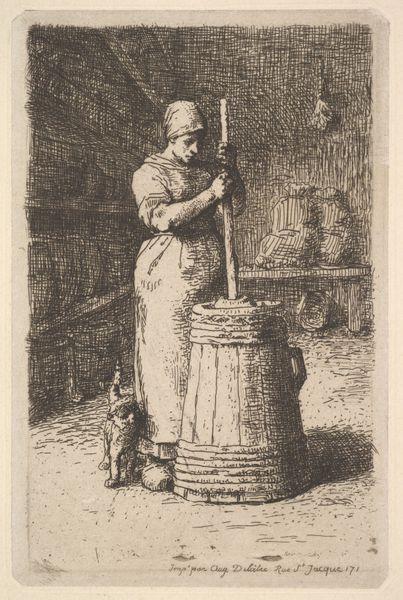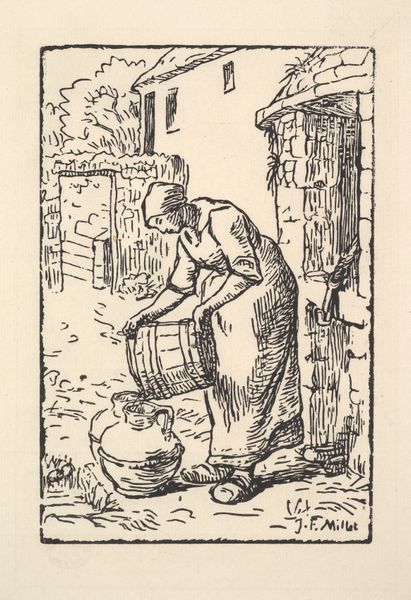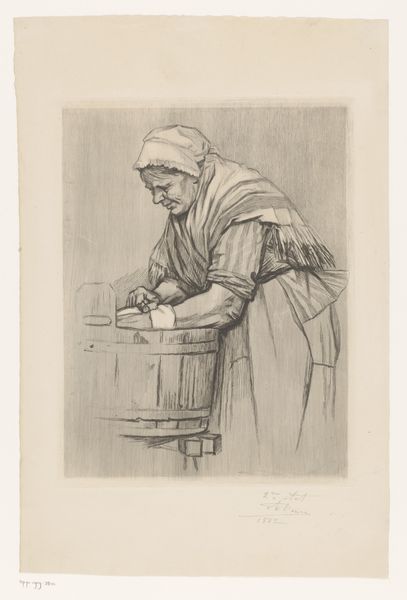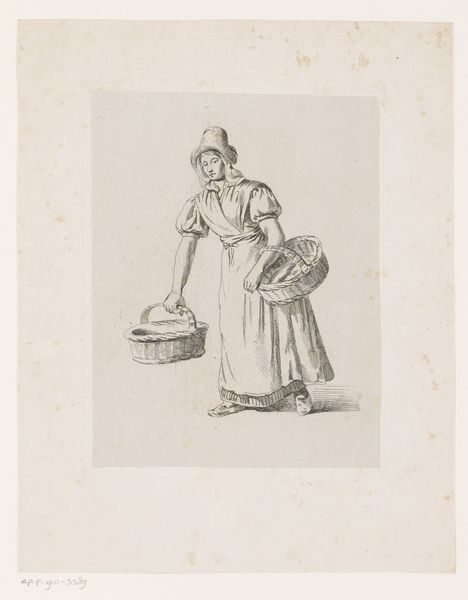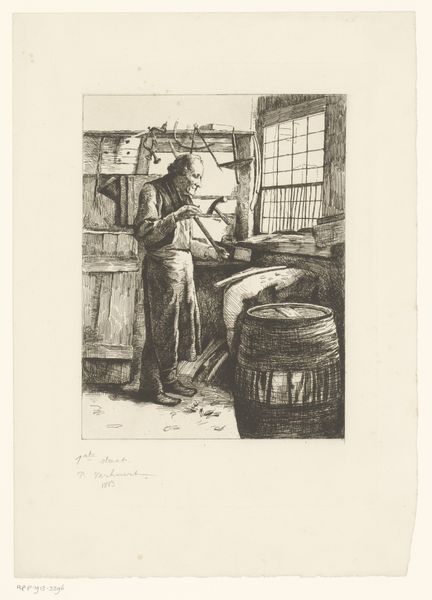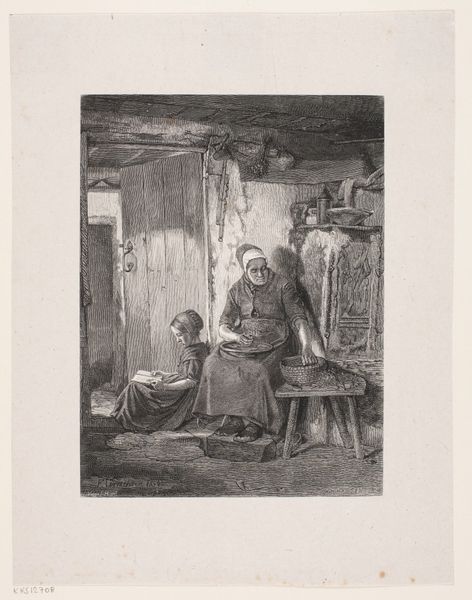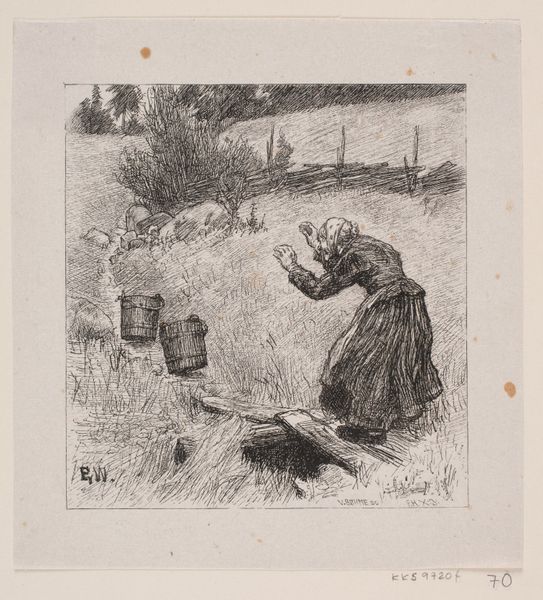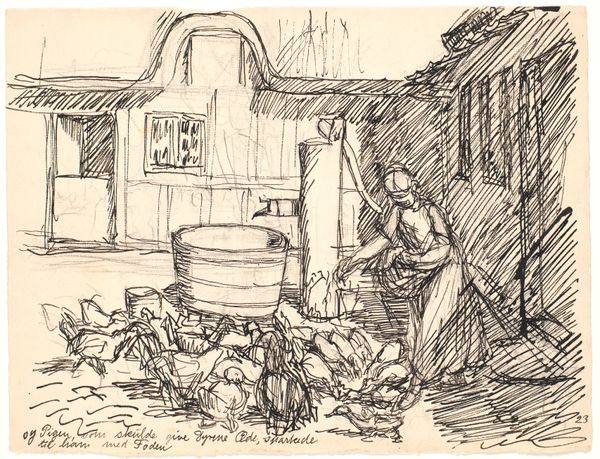
drawing, ink, pen
#
portrait
#
drawing
#
landscape
#
ink
#
pen-ink sketch
#
line
#
pen
#
genre-painting
#
realism
Dimensions: height 188 mm, width 130 mm
Copyright: Rijks Museum: Open Domain
Curator: Good morning. We're standing before "Woman Emptying a Bucket," an ink drawing from between 1834 and 1875, crafted by Pierre Millet, and currently held here at the Rijksmuseum. Editor: There’s a captivating simplicity to this sketch. The starkness of the lines against the blank space evokes a sense of solitude, doesn't it? A deliberate choice to reduce the scene to its essence, lending it a potent visual directness. Curator: Absolutely. Millet's decision to render the scene with just pen and ink emphasizes the unadorned reality of peasant life, aligning with the Realist movement of the time. Consider how the image resonates with the broader cultural understanding of labor, specifically a woman's work, in the 19th century. Editor: The composition really draws my eye. Note how the architectural features – the doorway, the suggestion of a house – create a strong vertical anchor. Then you have the diagonal formed by the woman's body leaning forward, mirrored subtly in the scattering droplets. Curator: Those details certainly amplify the narrative. Pouring water was often laden with symbolic weight; renewal, cleansing, or even an attempt at controlling nature’s abundance. One must reflect on the arduous daily tasks, almost rituals, women performed, and the values attached to those labors. The empty bucket almost carries a double meaning; not just labor, but also need. Editor: That repetition of rounded forms, too: the buckets, the woman’s headscarf, and even the suggestion of her posture. It creates a pleasing visual rhythm, softening the potential harshness of the scene, like a visual echo. Do you suppose Millet intentionally used circular imagery? Curator: I’d argue the deliberate artistic choices were to evoke sympathy and dignity in his subject rather than mere sterile objectivity. Millet invites us not just to observe, but to empathize. Editor: It’s an incredibly direct and immediate drawing. A very distilled vision. The artist has certainly crafted an affecting portrait. Curator: A picture indeed loaded with visual and emotional depth, making us mindful of cultural memories related to daily rituals. Editor: A brief, suggestive sketch, yet incredibly articulate in its construction and representation.
Comments
No comments
Be the first to comment and join the conversation on the ultimate creative platform.
